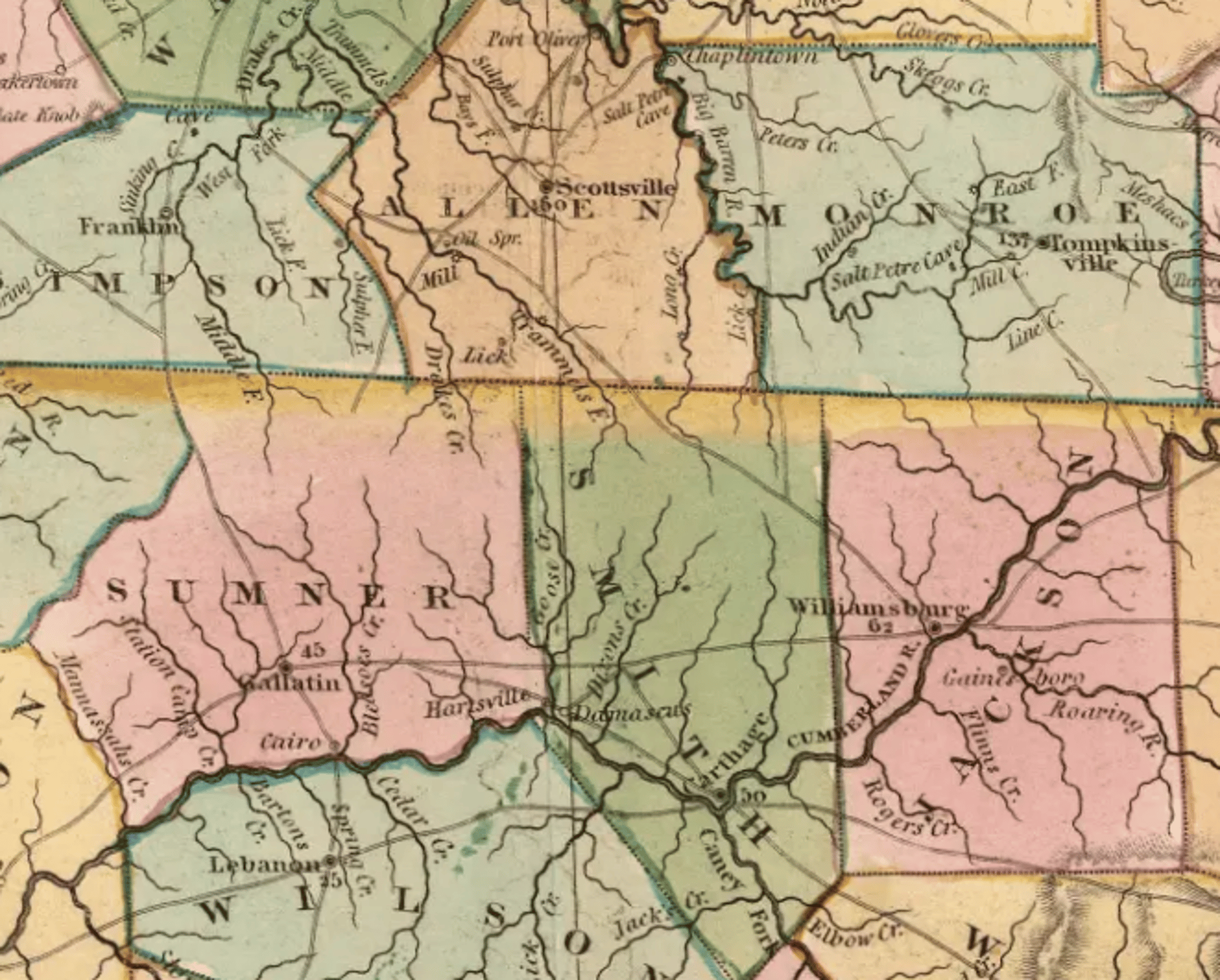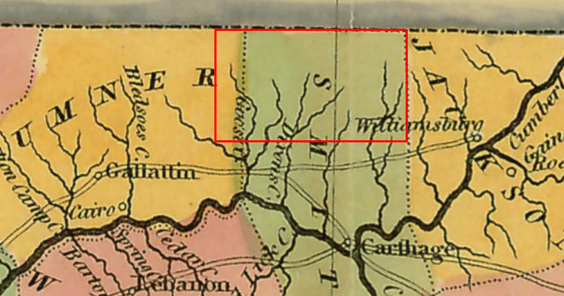
Pre-Macon County
Indians in Macon County...
Information from an excerpt by Ben Holder from "History of Macon County, Tennessee" by Harold G. Blankenship
Macon County was a typical hunting ground for many Indian tribes. In the are where Macon County now lies, it is believed that the Cherokees, Chickasaws, and Creeks were some of the prominent tribes that inhabited the area. While there are not many specifics to lay out which of these scenarios happened in the boundaries of Macon County, early settlers and hunters such as Daniel Boone, "Big Foot", Spencer, and Joey Bishop, older writings tell us some about the Indians they encountered.
On Macon County specifics, the best information we have are from historic sites where relics of Indian life have been discovered over time. There are many sites in Macon County along the streams and hills where relics have been found. Holder mentions that one productive site is located near the Lafayette Airport where during its construction, relics were uncovered from the Paleo period, the Archaic period, and most of the relics found were from the Woodland period. These relics and timelines indicate that Indians could have inhabited the area near the airport as early as 10,000 years ago. Pottery was a large example of artifacts of Indian life, however, there were no pottery shards known to have been found at the airport site.
Here are some notes of some examples of artifacts discovered around Macon County:
Pottery shards found in the Sycamore Valley community in a cave on land owned by Mr. L.B. Craighead. Said to be from the Woodland period.
Along Goose Creek and Carter Branch, arrowheads and knives with the distinct shape from the Adena culture, had been found in the past here.
In the 1930's, a man visited the farm of Curtis Cothron of the Hillsdale community and unearthed four stone box graves with copper earrings and some other objects.
Red Brawner of Coleytown was said to have dug a posthole on his father's farm just below Carter Branch where he uncovered another stone box grave.
Mr. Holder notes that during his travels, there is one site in Macon County that could be a potential mound burial ground, near Carter Branch as well.
Relics found in the bottoms near the Corinth Bridge of Salt Lick Creek. Relics in the shapes of birds, turtles, and snakes as well as bones in the bluffs of the area.
A small band of Cherokee lived in the Red Boiling Springs area around the late 1700's to early 1800's. Their chief was Cauthauley. Although we have only discussed a few mentions of Indian life in Macon County, it is probable that Indians lived here for about 10,000 years. There are probably many other artifacts and signs of Indian life that are lost to time.
A story by Mr. Gass who lived in the Bugtussle Community:
"About the year 1900, an Indian visiting the bottoms told Mr. Gass that he had followed signs on trees and bluffs to these bottoms. He said that the signs led to the place where his forefathers held their tournaments of skills with their weapons as well as certain athletic events which the Indians practiced. These Indians from all over would gather in these bottoms once a year for these contests of skills. This could explain the odd shaped relics found in this area."
A story about Mr. Wakefield, an early settler of the county from Calvin Gregory:
"While out hunting one day he heard an unusual noise which sounded like a turkey. He hid behind a tree while trying to spot the cause of the noise, Mr. Wakefield knew that Indians sometimes used tricks to lure unsuspecting victims to show themselves at close range just so that they could kill them. He then stuck his hat on a stick and stuck it around the tree, drawing a shot by the Indian. Wakefield was able to shoot the redskin out of the tree before he shot."
Here are also two interesting stories that Holder notes in his writings:
The First White Settlers
Information from "History of Macon County, Tennessee" by Harold G. Blankenship
White settlers in the area of what is now Macon County likely originally settled around tributaries of the Cumberland and Barren Rivers from 1787-1800. The first areas here to be settled were those at Goose Creek, Salt Lick, Long Creek, and Gibbs Crossroads. Much of Tennessee, which although formed in 1796 was unable to grant land until around 1806, was granted by the mother state, North Carolina, prior to Tennessee's ability to grant lands. Much of what is now Macon County was under North Carolina's control until 1796. Early land grants were often times old and changed hands numerous times before land was actually granted and settled. Early grants in what is now Macon County were to: John Hinds, Matthew Brooks, Marved Lorve, James McLurie, Robert McConnell and Thomas Hickman. Hickman, in 1797, was granted several 640 acre tracts, a single 1,000 acre tract, and another 2,560 acre tract. Most of these grants being around Salt Lick Creek and Puncheon Creek. There are many other Macon County men who received rather large grants including: Alfred Payne, Samuel Pipkin, William Holland, Thomas Flippin, William Wilson, Samuel Hare, William King, Eason Howell, and Pleasant Chitwood, and a host of many, many others.


A map, depicting the portions of Sumner and Smith County from which Macon County would be formed.